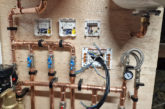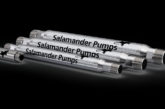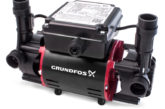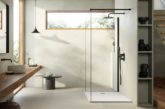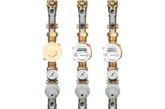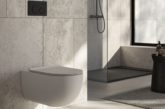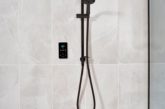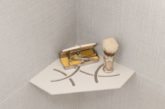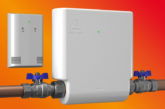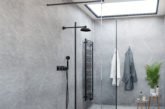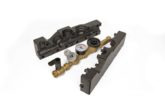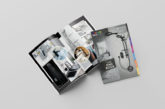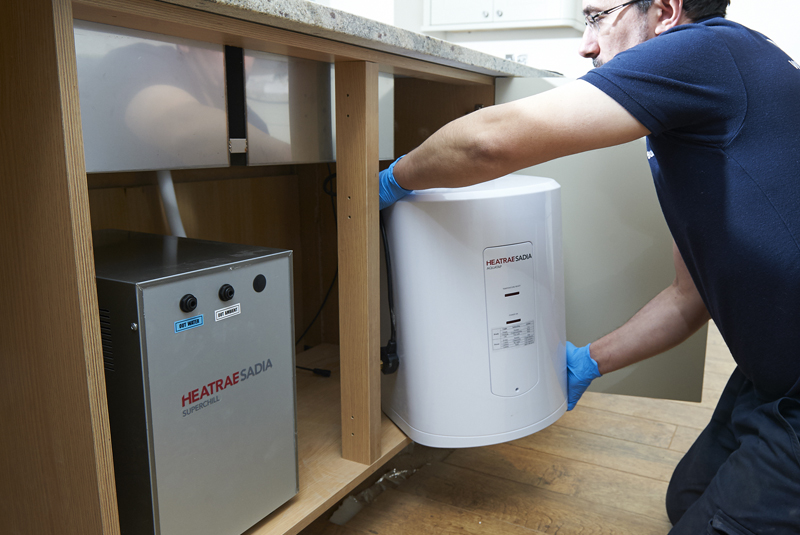
Recent reports indicate growth in commercial construction, which could lead to increased demand for drinking water units. Richard Newman, Senior Product Manager at Heatrae Sadia, explains more.
According to the Markit/CIPS UK Construction Purchasing Managers’ Index, the British construction industry ended 2015 on a robust note, with commercial construction remaining the best-performing sub-category. The higher demand for commercial projects was attributed to improving economic conditions, and just over half of respondents anticipated a rise in business activity in 2016, with only 7% expecting a fall. And the growth isn’t just confined to London; in Birmingham, for example, offices are being built at the fastest rate for 13 years.
All of the new commercial buildings springing up across the UK will, of course, have some type of onsite catering facilities, ranging from small kitchens to large canteens – presenting installers with the opportunity to use their skills for more than installing heating products.
Over recent years we’ve seen a definite rise in the number of businesses and organisations using electric boiling water units instead of kettles, urns or drinks machines. This is good news for heating installers who work in the commercial sector and want to broaden their offering, especially as these products are simple to install and have minimal maintenance requirements.
Permanently connected to the cold water mains, electric boiling water units provide a constant supply of hot water, which can be used for various purposes. In smaller workplace kitchens, boiling water units are ideal for quickly making hot drinks like tea and coffee, and for preparing instant snacks and soups. This is particularly beneficial for busy working environments where employees don’t have time to wait for a kettle to boil. And in larger catering environments, such as restaurant kitchens, canteens and cafés, having boiling water literally on tap for food preparation can save chefs huge amounts of time.
Boiling water units also eliminate safety hazards; kettles and urns full of boiling water can be knocked over, and trailing cables can be damaged. Kettle users can also be scalded by water spilling from the appliance, or by steam. In comparison, boiling water units are securely mounted onto a wall or counter top, so they can’t be knocked over.
As well as offering time saving and safety benefits, boiling water units are also energy efficient, delivering the amount of water required and replacing it as it is used. In comparison, kettles and urns are invariably filled with more water than is needed, which wastes energy.
Our easy-to-install, five-litre capacity Aquatap is based on the market Supreme boiling water product, and includes similar built-in safety features and the same Intelliboil Plus technology. This effectively and efficiently manages the boiling cycle by regularly bringing the contents of the water container to the boil in response to ongoing user demand.
Over recent years, there’s also been growing demand for cold drinking water in the workplace. The case for drinking an adequate amount of water is well-documented; dehydration can contribute to headaches, tiredness and irritability, as well as serious health problems. Studies have also suggested that water increases the blood’s ability to carry oxygen to the brain, improving concentration and mental performance.
Some workplaces opt for bottled water coolers, but this can be expensive and involves a lot of maintenance in terms of replacing and storing the relatively large, heavy bottles. In addition, bottled water in general has come under scrutiny in recent years, in terms of its environmental impact and whether plastic water bottles actually harbour potentially harmful bacteria.
The HSE document Welfare at Work states that the law requires employers to provide drinking water preferably from the public water supply (bottled water dispensers are acceptable as a secondary supply). Tap water, however, can be poor tasting and warm – which can discourage people from drinking it. A good solution is to chill and filter mains water via economical plumbed-in units. These use the existing drainage system and are usually floor or wall mounted, or built in to a cupboard.
We offer the SuperChill chilled water unit, and Aquatap is designed to deliver chilled or ambient water in addition to boiling water; there are boiling only, boiling/chilled and boiling/ambient versions available.
An increasing number of businesses and organisations are beginning to appreciate the benefits that instant boiling and chilled water products provide, whether they have a small kitchen or large catering facilities. And, as more commercial buildings spring up across the UK, opportunities to install these products are only set to rise.


